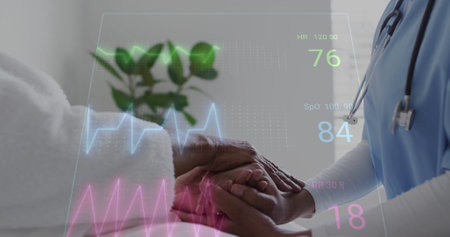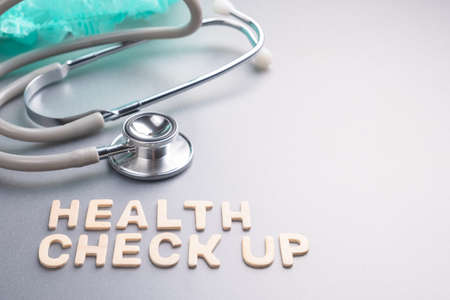Blue Light 101: What It Is and Where It Comes From
Blue light is a natural part of the visible light spectrum, sitting between 400 and 495 nanometers in wavelength. While we experience blue light from the sun every day, its presence in modern American life has multiplied with the rise of digital gadgets and energy-efficient lighting. Most smartphones, tablets, computer monitors, and even LED bulbs emit significant amounts of blue light—far more than the traditional incandescent lights that once filled our homes. In todays tech-driven culture, this means that Americans are exposed to blue light not just outside during daylight hours but also indoors, often late into the evening. Understanding where this blue light comes from is the first step to appreciating its growing influence on our daily routines, habits, and even our sleep patterns.
Gadget Nation: Our Increasing Screen Time
In the heart of modern America, gadgets have become more than just convenient tools—they are almost extensions of ourselves. From sunrise to sunset, and sometimes long past midnight, screens light up our homes, offices, and even commutes. Whether its scrolling through social media feeds on smartphones, tackling emails on laptops, or binge-watching shows on smart TVs, the average American’s daily life is intertwined with technology. According to recent surveys, adults in the U.S. spend an astonishing amount of time in front of screens every day—a trend that has only accelerated in the last decade.
| Device | Average Daily Usage (Hours) | Primary Activities |
|---|---|---|
| Smartphones | 3.5 | Social Media, Messaging, News |
| Laptops/PCs | 4.0 | Work, Email, Streaming |
| Smart TVs/Tablets | 2.5 | Binge-Watching, Gaming |
| Total Screen Time* | 7-10+ | All Combined Use Cases |
*These figures represent averages and can vary significantly by age group and occupation.
The culture around screen use is uniquely American in its intensity and expectation. Remote work and hybrid jobs encourage us to keep multiple devices at arms reach; meanwhile, digital connection is both a social norm and a form of relaxation after a long day. Even family gatherings might revolve around shared screen experiences—think movie nights or multi-player games. This constant exposure means blue light isn’t just something we encounter occasionally; it’s woven into the fabric of our routines, shaping how we interact, unwind, and even rest. As we navigate this digitally saturated world, understanding the impact of such habits on our health—particularly our sleep hygiene—becomes increasingly important.

3. The Science of Blue Light and Sleep
If you’ve ever found yourself scrolling through Instagram late at night or binge-watching your favorite show before bed, you’re not alone—and you might have noticed it’s harder to fall asleep afterward. The culprit? Blue light, a specific wavelength emitted by most of our digital devices. Recent research in the U.S. has brought blue light under the spotlight for its impact on our sleep, especially as Americans spend more time with gadgets than ever before.
At the heart of this conversation is our circadian rhythm—the internal clock that tells us when to wake up and when to wind down. Blue light exposure, particularly in the evening, can disrupt this delicate system. Here’s how it works: blue light suppresses melatonin, the hormone responsible for making us feel sleepy. When our bodies sense natural darkness, melatonin levels rise, signaling that it’s time to rest. But when we’re bathed in artificial blue light from screens, our brains get tricked into thinking it’s still daytime.
The American Experience: More Screens, Less Sleep
This disruption isn’t just theoretical; studies from American universities like Harvard and Stanford have shown clear links between late-night screen use and reduced sleep quality. Many Americans report difficulty falling asleep or feeling refreshed in the morning—a trend that has grown alongside our increasing dependence on digital technology. From teenagers glued to TikTok to adults catching up on emails after dinner, blue light exposure is shaping national sleep habits.
Melatonin Matters
Melatonin’s role is vital here. Lower melatonin doesn’t just make it harder to fall asleep; it can also reduce the overall quality of sleep, leading to grogginess and even mood changes the next day. Some experiments have shown that even a short burst of blue light—say, checking your phone before bed—can delay melatonin production for hours.
Everyday Impacts: What Research Shows
So what does all this mean for everyday Americans? It means that those midnight Netflix sessions or late-night group chats might be sabotaging your rest more than you realize. Current research continues to explore how much blue light is “too much,” but one thing is clear: understanding the science gives us a new lens to reflect on our relationship with technology and the natural rhythms our bodies crave.
4. Sleep Hygiene: Routines and Challenges in Modern America
In today’s fast-paced American society, sleep hygiene has become a buzzword—and for good reason. Gone are the days when most people wound down with a book or quiet conversation after sunset. Now, screens glow late into the night in bedrooms across the country, changing not just how we fall asleep, but whether we get quality rest at all. Sleep hygiene refers to the collection of habits and routines that help people fall asleep and stay asleep effectively. Yet, many Americans find themselves wrestling with an uphill battle against digital distractions, unpredictable work schedules, and a culture that often glorifies busyness over rest.
Changing Sleep Habits in America
Over the past few decades, the typical American bedtime routine has shifted dramatically. The rise of smartphones, streaming services, and social media means that winding down often involves scrolling through feeds or binge-watching shows—activities notorious for disrupting natural sleep cycles due to blue light exposure and mental stimulation.
Common Obstacles to Healthy Sleep Routines
| Obstacle | Description | Impact on Sleep |
|---|---|---|
| Screen Time Before Bed | Using phones, tablets, or TVs in the hour before sleep | Suppresses melatonin production; delays sleep onset |
| Irregular Schedules | Shifting bedtimes due to work or social commitments | Disrupts circadian rhythms; decreases sleep quality |
| Caffeine and Late-Night Snacks | Consuming stimulants or heavy foods close to bedtime | Makes it harder to fall asleep; increases nighttime awakenings |
| Stress and Mental Overload | Anxiety about work, family, or finances lingering at night | Leads to insomnia or restless sleep patterns |
The Reality of Building Better Sleep Hygiene
For many Americans, establishing healthy sleep hygiene is easier said than done. Even those who recognize the value of unplugging before bed may struggle to put their devices away due to work demands or fear of missing out (FOMO). Add in societal expectations around productivity and “always being available,” and it’s clear why restful routines remain elusive for so many. As we reflect on modern American life, it becomes evident that improving sleep hygiene isn’t just about personal willpower—it’s also about reshaping our collective attitudes toward rest and the role of technology in our homes.
5. Practical Tips: Protecting Sleep in a Tech-Saturated World
In a country where digital devices are woven into the fabric of daily life, safeguarding sleep can feel like an uphill battle. But American families and individuals don’t need to abandon their screens entirely—small, intentional changes can make a real difference. Here are science-backed, culturally relevant strategies that fit seamlessly with modern lifestyles.
Embrace Night Mode and Screen Settings
Most smartphones, tablets, and computers now offer night mode or blue light filter settings. Activating these features in the evening shifts your screen’s color temperature to warmer hues, reducing blue light exposure. It’s a simple adjustment that aligns with research showing less blue light before bed supports natural sleep rhythms. For tech-savvy Americans, scheduling night mode to activate automatically after sunset is an easy win.
Consider Blue Light Glasses
If you’re glued to screens for work or leisure, blue light blocking glasses have become a popular accessory in American offices and homes. While the research is mixed, many users report reduced eye strain and improved sleep quality when wearing them in the hours leading up to bedtime. Look for reputable brands and keep expectations realistic; these glasses are best used as one tool among many healthy habits.
Create Family ‘Screen-Free’ Zones
For families trying to carve out quality time and protect everyone’s rest, establishing ‘screen-free’ zones—like bedrooms or the dinner table—can be transformative. In American culture, these shared rituals reinforce boundaries between technology and personal connection. Consider setting a device curfew an hour before bed, making space for reading, conversation, or winding down without screens.
Set Realistic Boundaries
No solution fits every household or individual perfectly. The key is honest reflection on your habits and what’s realistic given your work demands, family needs, and social life. Even small steps—like charging phones outside the bedroom or using TV’s built-in night mode—can add up over time.
Experiment and Reflect
Treat your sleep hygiene as a living experiment. Notice how your body responds to less screen time at night or to new settings on your devices. Share observations with family members and adjust as needed. In the spirit of American ingenuity, remember: it’s about progress, not perfection.
6. Rethinking Our Relationship with Technology and Rest
In a world where smartphones and screens are never more than an arm’s reach away, it’s easy to forget that our bodies and minds crave downtime. The blue light debate isn’t just about science—it’s also about culture. Americans are increasingly aware of how digital overload chips away at both their sleep quality and overall well-being. As a result, many are beginning to experiment with “unplugging” as a new form of self-care.
Digital Detox: From Trend to Necessity
What started as a trend—like #NoScreenSunday or tech-free family dinners—has gained traction as people witness firsthand the benefits of logging off. Whether it’s setting up phone-free zones in the home, using apps that remind you to wind down, or even retreating to off-the-grid cabins for a weekend, Americans are getting creative in their pursuit of better rest and mindfulness.
Making Rest a Priority
The push for digital downtime is more than just nostalgia for pre-internet days. Research continues to show that intentional breaks from screens can improve sleep hygiene, mental clarity, and even deepen relationships. By rethinking our attachment to gadgets, we’re not just protecting our eyes from blue light—we’re reclaiming moments of quiet and presence that are easily drowned out by notifications.
Small Steps Toward Big Change
No one’s suggesting ditching technology altogether; after all, it’s woven into the fabric of modern American life. But setting boundaries—like powering down an hour before bed, or leaving your phone outside the bedroom—can be powerful acts of self-respect. As we navigate this digital age, experimenting with unplugging becomes less about restriction and more about rediscovering balance.
Ultimately, understanding blue light is just one piece of the puzzle. The bigger picture is about recognizing our own needs for rest and mindful living—and finding ways to honor them in a connected world.


